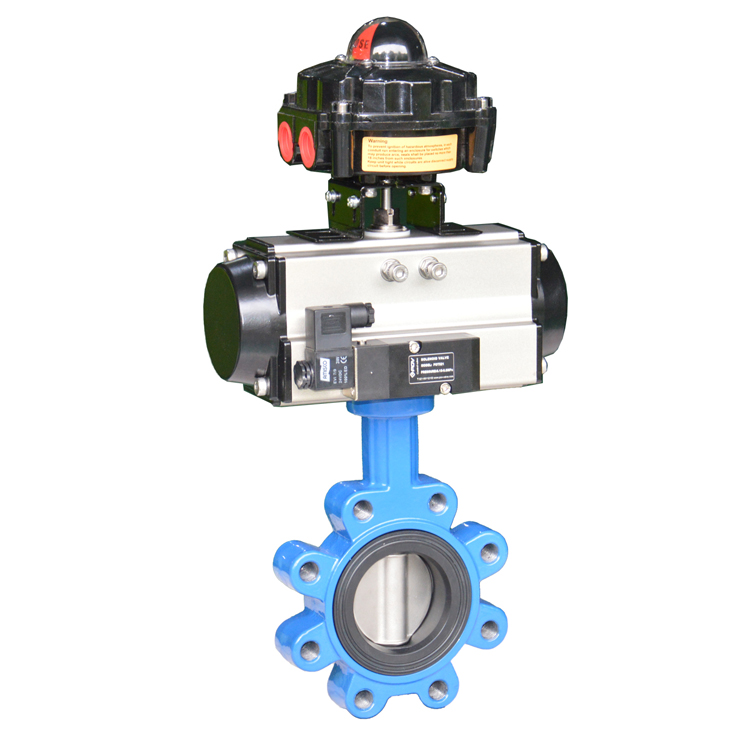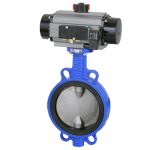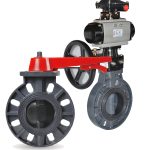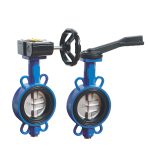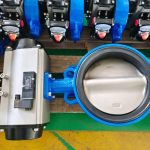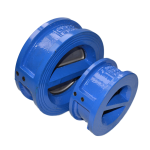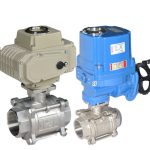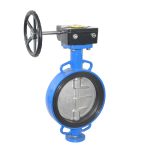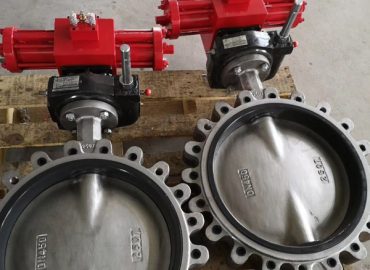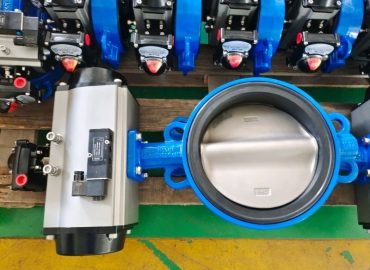In the world of industrial machinery and fluid control systems, butterfly valve play an integral role. These devices, often unnoticed and underestimated, are vital cogs that ensure the smooth operation of many industrial processes. With a simple yet effective mechanism, butterfly valve control the flow of various fluids and gases, contributing significantly to the efficiency and safety of countless industries. In this blog post, we will delve into the basics of standard butterfly valve, exploring their structure, functionality, types, materials used, advantages, and how to choose the right one for your needs. By understanding these fundamentals, you’ll be better equipped to appreciate the importance of these unsung heroes in our everyday lives.
Introduction
Standard butterfly valve, often an overlooked component in fluid control systems, are essential devices used to regulate the flow of liquids and gases in various industrial applications. At their most basic, butterfly valve consist of a disc attached to a rotating shaft. When the valve is fully open, the disc rotates to a position parallel to the fluid or gas flow, allowing unrestricted passage. Conversely, when the valve is closed, the disc rotates to block the passageway completely, stopping the flow. The simplicity of this design offers many advantages. Firstly, butterfly valves are generally lighter and more compact than other types of valves, making them easier to install and maintain. Secondly, they provide a reliable and efficient method of starting, stopping, and controlling fluid flow, contributing significantly to overall process efficiency. Butterfly valve can be made from a variety of materials such as cast iron, stainless steel, and plastic, each offering different benefits and suitability for specific applications. For instance, plastic butterfly valve are often used in corrosive environments due to their excellent resistance to chemical attack, while stainless steel valves offer superior durability and strength. Finally, choosing the right butterfly valve for your needs depends on several factors including the nature of the fluid or gas to be controlled, the required flow rate, the operating temperature and pressure, and the specific requirements of your system. By considering these factors, you can select a butterfly valve that provides optimal performance and longevity.
Brief introduction to butterfly valve
Butterfly valves are a type of quarter-turn valve used to regulate fluid flow in various systems and processes. They get their name from the disc inside the valve body that rotates, much like a butterfly flapping its wings. The disc, which is mounted on a rotating shaft, opens, closes, or modulates the flow of the fluid passing through the valve. Butterfly valves are highly versatile and efficient, making them a popular choice for applications across numerous industries, including water treatment, oil and gas, food and beverage, pharmaceuticals, and more. They are known for their simplicity, reliability, and cost-effectiveness. Despite their seemingly straightforward design, understanding the basics of butterfly valves, including their construction, operation, types, and applications, can help optimize their use in various industrial contexts.
Importance and applications of butterfly valve in various industries
Butterfly valves hold immense importance in various industries due to their efficient, cost-effective, and versatile nature. They are extensively used in the water and wastewater treatment industry to control the flow of water during various processes. In the oil and gas sector, they are integral to pipeline flow control, where their durability and reliability make them ideal for handling extreme pressures and temperatures. The food and beverage industry also relies on sanitary butterfly valves for hygienic applications, as they are easy to clean and maintain. Similarly, in the chemical industry, they are used to handle a wide range of corrosive and hazardous substances, thanks to their ability to be made from a variety of resistant materials. Even in HVAC systems, butterfly valves help in modulating the flow of hot and cold air. Their compact design, simple operation, and efficient control mechanism make them a preferred choice across these diverse applications. Thus, butterfly valves play a pivotal role in ensuring the smooth functioning of many industrial operations.
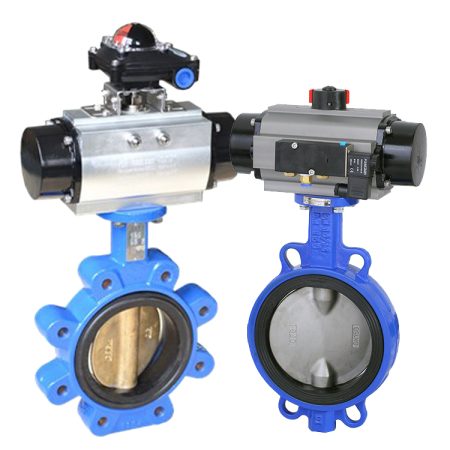
What is a Butterfly Valve?
A butterfly valve is a flow controlling device that is used in various industrial applications to regulate or halt the flow of liquids or gases through a series of pipes. It belongs to the family of quarter-turn valves and operates in a similar way to a ball valve, allowing for quick shut off. The valve consists of a disc that is mounted on a rotating shaft. When the valve is fully open, the disc rotates to a position parallel to the flow, letting the fluids pass without restriction. Conversely, when the valve is closed, the disc rotates to block the passageway, thus stopping the flow. The simplicity of their design makes butterfly valves lightweight, compact, and easy to install and maintain, as compared to other types of valves. They are available in different sizes and can be made from a variety of materials such as cast iron, stainless steel, and plastic to suit specific application needs. The choice of material depends on the type of fluid or gas to be controlled, operating temperature and pressure, and the system’s specific requirements. Despite their simple construction, butterfly valves provide an efficient and reliable method of starting, stopping, and controlling fluid flow, making them a crucial component in many industrial systems.
Detailed definition of butterfly valve
A butterfly valve is a specialized type of valve that is commonly used to control the flow of various types of fluids within a system. It falls under the category of quarter-turn valves, implying that it takes a 90-degree turn of the handle to completely open or close the valve. The primary component of a butterfly valve is a disc that is centrally mounted on a rotating shaft. This disc, which gives the valve its name due to its resemblance to a butterfly’s wings, pivots within the passageway to allow, restrict, or completely stop fluid flow. When fully opened, the disc aligns with the direction of the fluid flow, offering minimal resistance and maximum flow. When the disc is rotated to a perpendicular position, it blocks the passageway, halting the flow entirely. Butterfly valves are appreciated for their compact size, lightweight design, ease of installation, and cost-effectiveness. They can be made from a range of materials, including stainless steel, cast iron, and plastic, to handle different operating conditions and fluid types. These valves find extensive application in various industries such as water treatment, oil and gas, chemical processing, and food and beverage, among others.
Explanation of how a butterfly valve works
A butterfly valve operates through a simple yet effective mechanism that controls the flow of fluids. At the heart of its operation is a disc, centrally mounted on a rotating shaft. This disc, which can be likened to the wings of a butterfly, is the primary component that modulates fluid flow. When the valve handle is turned, it causes the disc to rotate. A 90-degree turn of the handle can fully open or close the valve, hence why it’s categorized as a quarter-turn valve. In the fully open position, the disc aligns with the direction of the fluid flow. This alignment reduces resistance and allows the maximum amount of fluid to flow through the valve. Conversely, when the valve is closed, the disc rotates to a position perpendicular to the fluid flow, blocking the passageway entirely and stopping the flow. The ability to quickly and efficiently start, stop, or regulate fluid flow makes the butterfly valve an essential component in many industrial applications. Its simple design also allows for easy maintenance and long service life, contributing to its widespread use in various industries.
Different parts of a standard butterfly valve (disc, stem, seat, body)
A standard butterfly valve is composed of four main components: the disc, stem, seat, and body. The disc is a circular or semi-circular component that rotates on the stem, which serves as the pivot point. This rotation allows the disc to control the flow of fluid through the valve. The stem, which can be a one-piece shaft or a two-piece pin and shaft, connects the actuator or handle to the disc. It transmits the force from the actuator, causing the disc to rotate. The seat is a sealing ring that ensures a tight seal when the valve is closed. It can be made from various materials, depending on the application, and is designed to provide a snug fit around the disc when the valve is closed, preventing fluid leakage. Lastly, the body of the butterfly valve houses the disc, stem, and seat. It has flanged ends to connect the valve to the rest of the piping system. The body can be constructed of different materials, such as cast iron, stainless steel, or plastic, to withstand different operating conditions and fluid types.
Types of Butterfly Valve
Butterfly valves are versatile and widely used in various industries due to their simple design, efficiency, and the ability to handle different types of fluids. They come in several different types, each with unique characteristics suitable for specific applications. The most common types include concentric, double-eccentric (high-performance), and triple-eccentric butterfly valves. Concentric butterfly valves, also known as resilient seated butterfly valves, have a simple design with the stem centered in the middle of the disc, and the disc centered in the pipe bore. This type is cost-effective, reliable, and suitable for most general applications, especially in water systems. Double-eccentric or high-performance butterfly valves have the stem slightly offset from the center of the disc, and the disc itself is not centered within the pipe bore. This design reduces wear and tear on the valve, making it suitable for higher pressure and temperature applications. The third type, triple-eccentric butterfly valves, also known as metal-seated butterfly valves, have the stem offset from the center of the disc, the disc offset from the centerline of the pipe bore, and a conical shape of the seating surface. This design virtually eliminates friction between the sealing surfaces, making these valves ideal for high-temperature, high-pressure, and corrosive applications where tight shut-off is required. Each of these types serves a specific purpose and is selected based on the requirements of the system they’re used in.
Overview of the different types of butterfly valve (concentric, double-eccentric, triple-eccentric)
Butterfly valves, known for their simple design and efficiency, come in three main types: concentric, double eccentric butterfly valve, and triple eccentric butterfly valve. Each type is designed to serve specific applications and fluid handling needs. Concentric butterfly valves, also known as resilient-seated butterfly valves, have a straightforward design where the stem is centered in the disc, and the disc is centered in the pipe bore. They are economical and reliable, making them suitable for general applications, particularly in water systems. Double-eccentric butterfly valves, or high-performance butterfly valves, feature a stem slightly offset from the center of the disc, and the disc itself is not centered within the pipe bore. This reduces wear and tear on the valve, making it appropriate for higher pressure and temperature applications. Lastly, triple-eccentric butterfly valves, also known as metal-seated butterfly valves, have a more complex design. The stem is offset from the center of the disc, the disc is offset from the centerline of the pipe bore, and the seating surface has a conical shape. This design virtually eliminates friction between the sealing surfaces, making these valves ideal for high-temperature, high-pressure, and corrosive applications where tight shut-off is required.
Description of each type, their distinctive features, and their specific applications
Concentric butterfly valves, known for their simple and efficient design, have the stem and the disc centered in the middle of the pipe bore. These valves are cost-effective and reliable, making them the preferred choice for general applications such as water and air systems. They are not recommended for applications with high pressure or temperature due to potential wear and tear on the disc and seat.
Double-eccentric or high-performance butterfly valves feature a stem that is slightly offset from the center of the disc and a disc that is not centered within the pipe bore. This unique design results in less wear and tear on the valve when opening and closing, extending its service life. These valves are ideal for higher pressure and temperature applications such as steam, chilled water, and HVAC systems.
Triple-eccentric butterfly valves, also known as metal-seated butterfly valves, have three distinct offsets: the stem is offset from the center of the disc, the disc is offset from the centerline of the pipe bore, and the seating surface has a conical shape. These features eliminate almost all friction between the sealing surfaces, allowing these valves to handle extreme conditions. Triple-eccentric butterfly valves are suitable for high-temperature, high-pressure, and corrosive applications. They’re commonly used in industries such as oil and gas, chemical processing, and power generation where a tight shut-off is essential.
Materials Used in Butterfly Valve
Butterfly valves are constructed from a variety of materials to suit different applications and operating conditions. The choice of material depends on the type of fluid the valve will handle, the pressure and temperature conditions, and the desired durability and corrosion resistance. Cast iron is a common material used for the body of marine butterfly valves due to its strength and cost-effectiveness. It’s suitable for low to medium pressure environments and is often used in water distribution systems. Ductile iron, stronger and more impact-resistant than cast iron, is also used in higher pressure situations. Stainless steel butterfly valves are favored for their corrosion resistance and strength. They are ideal for handling aggressive chemicals and high-temperature fluids. For high-performance and triple offset butterfly valves, carbon steel is often used as it can withstand high pressures and temperatures. The disc inside the valve can be made from stainless steel, aluminum bronze, or even Hastelloy for highly corrosive applications. The seat materials vary from resilient materials like EPDM, NBR, and PTFE, which are suitable for low-temperature applications, to metal seats for high-temperature applications. In some cases, the interior surfaces of the valve might be lined with rubber or plastic to provide additional corrosion resistance or to enable the valve to handle abrasive fluids. Therefore, the materials used in butterfly valves are diverse and carefully selected to match the specific demands of each application.
Discussion on the different materials used in the manufacturing of butterfly valve (cast iron, stainless steel, plastic etc.)
The manufacturing of pneumatic butterfly valve employs a diverse range of materials, each selected for their specific properties to suit varying operational conditions. Cast iron is a popular choice for the body of butterfly valves because it combines strength and cost-effectiveness. It’s appropriate for low to medium pressure applications, often seen in water distribution systems. However, for higher pressure situations, ductile iron – which offers greater strength and impact resistance than cast iron – is typically used. Stainless steel is another prevalent material in butterfly valve construction, favored for its high corrosion resistance and strength. It’s particularly suitable for handling aggressive chemicals and high-temperature fluids. For high-performance and triple offset butterfly valves, carbon steel is often the preferred choice due to its ability to withstand high pressures and temperatures. In some cases, plastic or plastic-lined butterfly valves are used when extreme corrosion resistance is required, or when handling highly corrosive fluids. The disc within the valve can be made from a variety of materials like stainless steel, aluminum bronze, or even more specialized materials like Hastelloy for extremely corrosive applications. The seat materials range from resilient options like EPDM, NBR, and PTFE for low-temperature applications, to metal seats designed to withstand high temperatures. Therefore, the choice of material in butterfly valve manufacturing is critical and tailored to the specific requirements of each application.
Benefits and drawbacks of each material
Cast iron is a common material used in butterfly valves due to its strength and cost-effectiveness. Its benefits include good machinability, excellent vibration damping, and the ability to withstand wear over time. However, cast iron is susceptible to rust and corrosion, especially when exposed to moisture or aggressive chemicals.
Ductile iron, being stronger and more impact-resistant than cast iron, is beneficial for high pressure situations. It has excellent mechanical properties and superior resistance to wear, making it durable. But like cast iron, ductile iron can also be prone to corrosion if not adequately protected.
Stainless steel is a highly corrosion-resistant material, making it ideal for handling aggressive chemicals and high-temperature fluids. It’s also strong and durable. However, stainless steel butterfly valves are more expensive than their iron counterparts, which may limit their use in budget-sensitive applications.
Carbon steel is favored for its ability to withstand high pressures and temperatures, making it suitable for high-performance and triple offset butterfly valves. Its high tensile strength makes it extremely durable. However, without proper protection, carbon steel can be susceptible to corrosion.
Plastic or plastic-lined butterfly valves provide exceptional corrosion resistance, making them suitable for handling highly corrosive fluids. They are lightweight and relatively inexpensive. However, they may not be suitable for high temperature or high-pressure applications, as they can deform or melt under extreme conditions.
The choice of seat materials, such as EPDM, NBR, and PTFE, offer good chemical resistance and flexibility, making them suitable for low-temperature applications. However, these materials may degrade over time, especially under high-temperature conditions. On the other hand, metal seats can withstand high temperatures but may not provide as tight a seal as their softer counterparts.
In conclusion, each material used in butterfly valves has its benefits and drawbacks, which should be considered in relation to the specific requirements of each application.
Advantages and Disadvantages of Butterfly Valve
Butterfly valves are known for their multiple advantages in many applications, but they also come with certain disadvantages. Starting with the advantages, butterfly valves are compact and lightweight, which makes them easier to install and maintain compared to other types of valves. They require less support structures, which can lead to cost savings in terms of installation. Due to their simple design, they operate quickly and efficiently, requiring only a quarter turn to open or close, which allows for fast isolation of a pipeline. This design also results in low pressure drops across the valve when it’s in the open position, improving energy efficiency. Furthermore, they can handle large flow rates and are versatile enough to be used with a wide range of temperatures and pressures. Butterfly valves can also be equipped with different types of actuators (manual, electric, pneumatic, or hydraulic) to suit specific operational needs.
On the downside, while butterfly valves are suitable for many applications, they might not be the best choice for all. One of the main disadvantages is that they are not recommended for high-pressure applications due to the potential for leakage. The disc obstructs the fluid flow even when fully opened, which can cause a slight pressure drop or turbulence. Although this is usually minimal, it may be unacceptable in some systems. Additionally, the seating of butterfly valves can wear out over time, especially if they are frequently cycled or used with abrasive media, leading to potential leakage. They are also not ideal for throttling purposes over extended periods because the control of flow isn’t as precise as other valve types, like globe valves. Lastly, while they can handle a range of temperatures, they might not perform well under extreme temperatures. Therefore, while butterfly valves offer numerous benefits, these potential drawbacks should be taken into consideration when choosing a valve for a specific application.
List of advantages of using butterfly valve
Butterfly valves are widely used in various industries due to their numerous advantages. Firstly, their compact and lightweight design makes them easy to install and maintain, requiring less support structures compared to other valves. This can lead to significant cost savings in terms of installation. Secondly, they operate quickly and efficiently, needing only a quarter turn to open or close, which facilitates rapid isolation of a pipeline. Thirdly, butterfly valves typically result in low pressure drops when in the open position, contributing to energy efficiency. Fourthly, their ability to handle large flow rates makes them versatile in many applications. They can also accommodate a wide range of temperatures and pressures, further enhancing their adaptability. Fifthly, butterfly valves provide the flexibility of being equipped with different types of actuators – manual, electric, pneumatic, or hydraulic, to meet specific operational needs. Lastly, the materials used in butterfly valves can be customized to suit the medium being controlled, whether it’s water, gas, or corrosive chemicals, adding to their functional versatility.
List of potential disadvantages or limitations
While butterfly valves are highly beneficial in many respects, they do come with certain potential disadvantages or limitations. One of the primary limitations is that they are not typically suitable for high-pressure applications due to the risk of leakage. Additionally, even when fully opened, the disc of the butterfly valve can obstruct fluid flow, causing a slight drop in pressure or turbulence, which could be problematic in some systems. The seating of butterfly valves, especially those made of softer materials, can wear out over time, leading to potential leakage issues, particularly if the valves are frequently cycled or used with abrasive media. Butterfly valves are also not ideal for throttling purposes over extended periods because they don’t provide as precise control of flow compared to other valve types like globe valves. Lastly, while butterfly valves can handle a range of temperatures, their performance might degrade under extreme temperature conditions. Therefore, these potential drawbacks should be taken into consideration when deciding whether a butterfly valve is the right choice for a particular application.
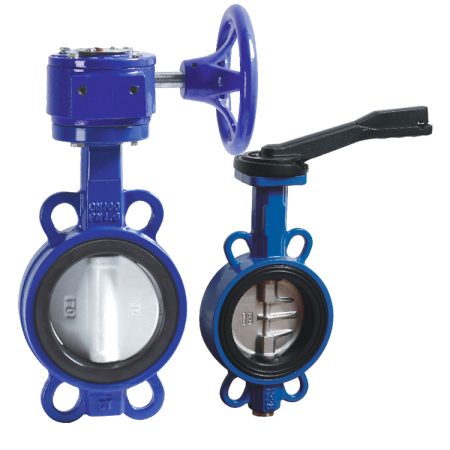
Choosing the Right Butterfly Valve
Choosing the right butterfly valve requires careful consideration of several factors to ensure optimal performance and longevity. The first step is to understand the nature of the fluid or gas that the valve will control, as different materials may react differently with specific media. For instance, some butterfly valves are better suited for handling corrosive substances, while others are ideal for non-corrosive fluids. Secondly, consider the pressure and temperature conditions under which the valve will operate. While butterfly valves can handle a wide range of pressures and temperatures, they may not be suitable for extreme conditions. Remember, butterfly valves are generally not recommended for high-pressure applications due to potential leakage issues.
The size of the pipeline is another crucial factor. Butterfly valves come in various sizes, so you should select one that fits your pipeline perfectly to ensure efficient flow control. The flow rate is also an essential consideration. While butterfly valves can handle large flow rates, the presence of the disc in the flow path can cause slight pressure drops or turbulence, especially when fully opened.
The frequency of operation is another factor to keep in mind. If the valve will be frequently cycled, a durable material should be chosen for the seating to prevent premature wear and potential leakage. If the valve is intended for throttling purposes, note that butterfly valves may not provide as precise flow control as other types of valves, such as globe valves.
Lastly, consider the type of actuator that best suits your operational needs. Butterfly valves can be equipped with manual, electric, pneumatic, or hydraulic actuators. The choice depends on the specific requirements of your system, such as speed of operation, safety considerations, and automation level.
In conclusion, while selecting a butterfly valve, it’s crucial to balance these factors against cost considerations. Although butterfly valves are typically more affordable than other valve types, choosing a cheaper option that doesn’t meet your system’s requirements could lead to higher costs in the long run due to inefficiencies or frequent replacements. Therefore, it’s essential to consult with a valve specialist or manufacturer to ensure you choose the right butterfly valve for your application.
Factors to consider when selecting a butterfly valve (size, type, material, pressure rating)
When selecting a butterfly valve, several factors should be thoroughly evaluated to ensure optimal performance and suitability for the intended application. The size of the valve is one of the most crucial considerations – it should correspond to the size of the pipe in your system for efficient flow control. The type of butterfly valve is also important. There are various types, including centered, double-eccentric, and triple-eccentric valves, each with its own advantages and ideal use scenarios.
The material of the valve is another key factor. Different materials such as stainless steel, cast iron, or plastic have different resistances to corrosion, temperature, and pressure, affecting their compatibility with the medium being controlled. For instance, if the fluid is corrosive, a valve made from a corrosion-resistant material like stainless steel would be a suitable choice.
The pressure rating of the valve is equally important. Butterfly valves are generally not advisable for high-pressure applications due to potential leakage issues. Therefore, understanding the pressure conditions in your system can help determine whether a butterfly valve is the right choice or if another type of valve might be more suitable.
In summary, careful consideration of these factors—size, type, material, and pressure rating—is essential when selecting a butterfly valve to ensure it meets the specific requirements of your system and provides reliable, long-lasting service.
Tips on choosing the right supplier or manufacturer
When choosing the right supplier or manufacturer, it’s crucial to consider several key factors to ensure a successful and beneficial partnership. First, assess their reputation in the industry. This can be done by reading customer reviews, checking ratings and certifications, and seeking recommendations from peers. A reputable supplier will typically have positive feedback and a proven track record of delivering quality products on time.
Next, consider their product quality and consistency. You want a supplier who can provide high-quality products consistently, as fluctuations in quality can affect your own product or service. Request samples or conduct site visits if possible to verify their claims.
Third, evaluate their pricing structure. While cost shouldn’t be the only deciding factor, it’s important to ensure their prices are competitive and offer good value for money. Remember, the cheapest option is not always the best if it compromises on quality or reliability.
Fourth, look at their delivery times and reliability. A supplier who can’t meet deadlines can disrupt your operations and negatively impact your business.
Fifth, assess their communication skills and customer service. You want a supplier who responds promptly to inquiries, resolves issues efficiently, and keeps you informed about any changes or delays.
Finally, consider their capacity and scalability. As your business grows, you need a supplier who can grow with you and meet increased demand. Checking their current clients and production capacity can give you an idea of whether they can handle your potential growth.
By considering these factors, you can choose a supplier or manufacturer that aligns with your business goals and contributes to your success.
Maintenance and Troubleshooting of Butterfly Valve
Butterfly valves, as integral components of many industrial systems, necessitate regular maintenance and careful troubleshooting to ensure optimal performance and longevity. As an industry leader in valve manufacturing, our company adheres to rigorous quality control measures and leverages deep-rooted technical expertise to guide you through the process.
Maintenance of butterfly valves primarily involves periodic inspection and cleaning. Sediment build-up can impede a valve’s function, causing it to stick or leak. Regularly inspecting the valve helps identify any signs of wear or damage early on, allowing for prompt intervention. Moreover, lubricating the valve stem at routine intervals is crucial to ensuring smooth operation and preventing rust.
Troubleshooting butterfly valves requires a comprehensive understanding of their operation and potential issues. Common problems include leakage, disc misalignment, and actuator malfunction. Leakage often results from worn-out seals or improper sealing surfaces, necessitating seal replacement or realignment. Disc misalignment, on the other hand, typically stems from incorrect installation or physical damage, requiring realignment or replacement of the disc. Actuator malfunctions can be traced back to various causes such as electrical faults, air supply issues, or mechanical failures, each demanding a distinct remedial approach.
Our company’s global reach and industry-specific certifications underscore our commitment to providing high-quality butterfly valves and unrivalled customer support. We facilitate not only the provision of top-tier products but also the knowledge and resources necessary for their upkeep. With our guidance, maintaining and troubleshooting your butterfly valves becomes a manageable, straightforward task, ensuring the sustained efficiency and reliability of your industrial systems.
Basic maintenance tips for butterfly valve
As an authority in the valve manufacturing industry, we are equipped with a wealth of knowledge and experience to provide you with essential maintenance tips for butterfly valve. Firstly, it’s crucial to regularly inspect your butterfly valve for signs of wear, damage or sediment build-up, which can hinder optimal operation. A systematic cleaning regimen should be established to ensure the valve remains free from debris that could disrupt its functionality. Secondly, the valve stem demands periodic lubrication to facilitate smooth operation and negate the risk of rust. Lastly, it’s important to monitor the valve’s sealing surfaces and seals. Any signs of deterioration often signal a leak, necessitating immediate replacement or realignment. By adhering to these basic maintenance procedures, you can significantly enhance the longevity and performance of your butterfly valve, thereby ensuring the efficiency and reliability of your overall industrial system.
Common problems and troubleshooting tips
In the world of valve manufacturing, we stand at the forefront, armed with an array of certifications, a global reach, and a deep-seated expertise. As such, we are well-positioned to address common problems that may arise with butterfly valve and provide authoritative troubleshooting tips. One frequent issue is leakage, often attributable to worn-out seals or improper sealing surfaces. In such cases, the immediate course of action is to replace the seal or realign the sealing surfaces. Another prevalent problem is disc misalignment, usually stemming from incorrect installation or physical damage. The remedy here lies in realigning or replacing the disc. Actuator malfunctions are also commonplace in butterfly valve, caused by a range of factors including electrical faults, air supply issues, or mechanical failures. Each of these requires a distinct remedial approach, whether it’s repairing the electrical connections, ensuring an adequate air supply, or addressing the mechanical fault. By leveraging our industry-specific knowledge and technical acumen, you can effectively troubleshoot these common issues, thereby ensuring the optimal performance and longevity of your butterfly valve.

Conclusion
In conclusion, understanding the basics of standard butterfly valve is a fundamental aspect of industrial operations. As we navigate through the complexities of these essential components, our unwavering confidence and authoritative stance have consistently been our guiding pillars.
Butterfly valve, with their unique design and operational capabilities, are integral to a wide array of industrial applications. Their simple yet efficient mechanism allows for effective regulation of flow, offering both robustness and flexibility. Nevertheless, as with any mechanical component, these valves require regular maintenance and occasional troubleshooting to ensure optimal performance.
Our company, with its industry-specific certifications and rigorous quality control measures, is at the forefront of valve manufacturing. Our global reach and deep-rooted technical expertise enable us to provide high-quality butterfly valve and unrivalled customer support. We not only supply top-tier products, but also furnish you with the knowledge and resources necessary for their upkeep.
Maintenance involves periodic inspection, cleaning, and lubrication, while common troubleshooting areas include leakage, disc misalignment, and actuator malfunction. Armed with our expert guidance, maintaining and troubleshooting your butterfly valve becomes a manageable, straightforward task.
As we delve deeper into the technicalities of butterfly valve, we hope this discussion has bolstered your understanding and equipped you to better manage these critical components. Our commitment to sharing industry knowledge and providing superior products underscores our position as an authority in the valve manufacturing industry.
Remember, the key to efficient industrial operations lies not just in the components you choose, but also in your understanding of them. By mastering the basics of standard butterfly valve, you are taking a significant step towards enhancing the efficiency and reliability of your industrial systems. Rest assured, with our confident and authoritative brand voice guiding you, you are well on your way to achieving industrial excellence.
Recap of the key points discussed in the blog post
In conclusion, this blog post has confidently navigated you through the essential facets of standard butterfly valve, a critical component in the valve manufacturing industry. We’ve explored their fundamental design and operational capabilities, emphasizing their robustness, flexibility, and widespread industrial applications. We delved into the necessity for regular maintenance, highlighting the importance of consistent inspection, systematic cleaning, and timely lubrication. We also addressed common issues, such as leakage, disc misalignment, and actuator malfunctions, providing authoritative troubleshooting guidance. Throughout, we underscored our brand’s commitment to quality control, technical expertise, and customer support. Our global reach and industry-specific certifications equip us to deliver not just superior products but also the necessary knowledge for their upkeep. By mastering these key points, you are well on your way to ensuring optimal performance and longevity for your butterfly valve.
Final thoughts and insights on the importance of understanding butterfly valve
As we conclude, it’s clear that a comprehensive understanding of butterfly valve is imperative for those involved in the industrial sector. These devices, with their unique design and operational capabilities, are more than just mechanical components; they are the backbone of numerous applications. Grasping their functionality, maintenance requirements, and common troubleshooting areas is not an option but a necessity. It ensures the longevity and optimal performance of these valves, thereby enhancing the overall efficiency of your operations. As a confident and authoritative leader in the valve manufacturing industry, we leverage our technical expertise, global reach, industry-specific certifications, and stringent quality control measures to provide you with top-tier butterfly valve and unrivalled support. Our final insight is this: the key to mastering industrial operations lies not only in the equipment you use but also in your depth of understanding of that equipment. And when it comes to butterfly valve, rest assured that our expert guidance will steer you towards operational excellence.


